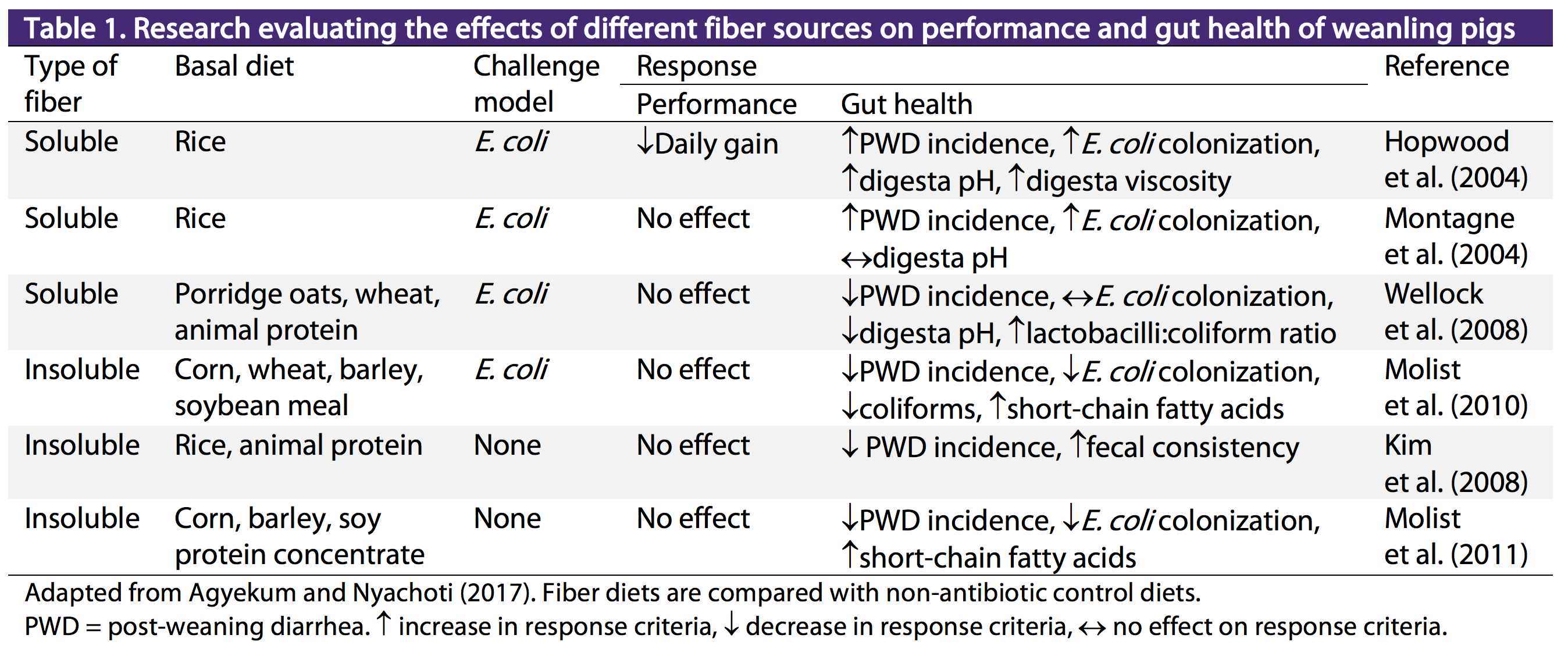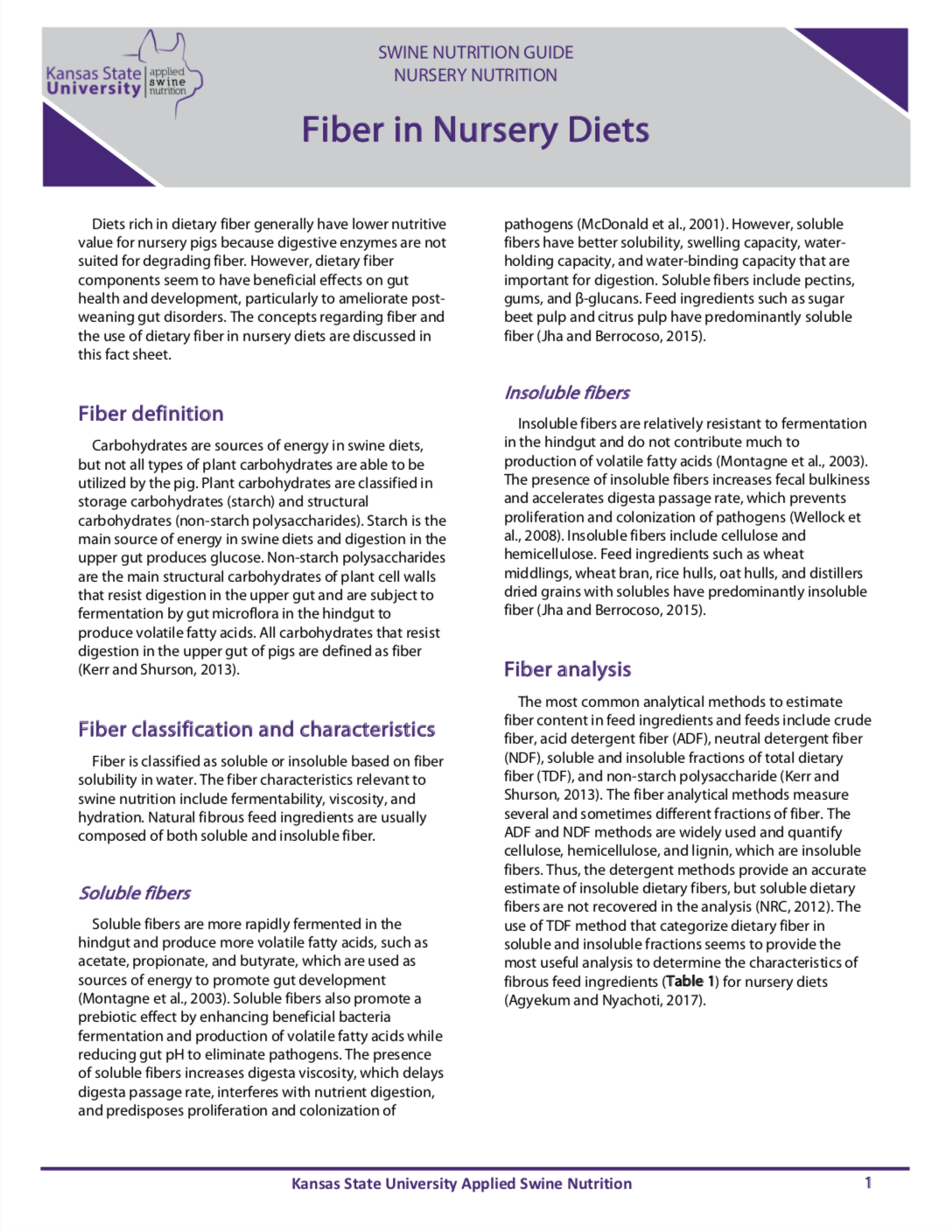Fiber in nursery diets
The use of fiber in nursery diets is mostly related to the purpose of ameliorating post-weaning diarrhea. However, there are no firm recommendations of dietary fiber to confer health benefits on weanling pigs. In general, the use of insoluble fiber is preferred over soluble fiber in the immediate post-weaning period (Agyekum and Nyachoti, 2017) ( Table 1 ).
Insoluble fibers accelerate digesta passage rate, which potentially prevents proliferation and colonization of pathogens and ameliorates post-weaning diarrhea. Soluble fibers have the opposite effect and potentially increase the risk of post-weaning diarrhea. The main issue with soluble fiber is the increase in digesta viscosity, which delays digesta passage rate and increases undigested nutrients, predisposing proliferation and colonization of pathogens. Furthermore, weanling pigs would not benefit from the fermentation of soluble fibers in the hindgut because of the very limited capacity to ferment fiber at a young age. However, the use of soluble fiber in later nursery stages might be beneficial to promote gut health and development (Agyekum and Nyachoti, 2017).
The key to effectively utilize dietary fiber in the nursery consist of investigating dietary ingredients that deliver the appropriate fiber characteristics to address the main concern in the nursery, as well as understanding that fiber characteristics that ameliorate post-weaning diarrhea might not be the same as those to maximize growth rate (De Lange et al., 2010).

